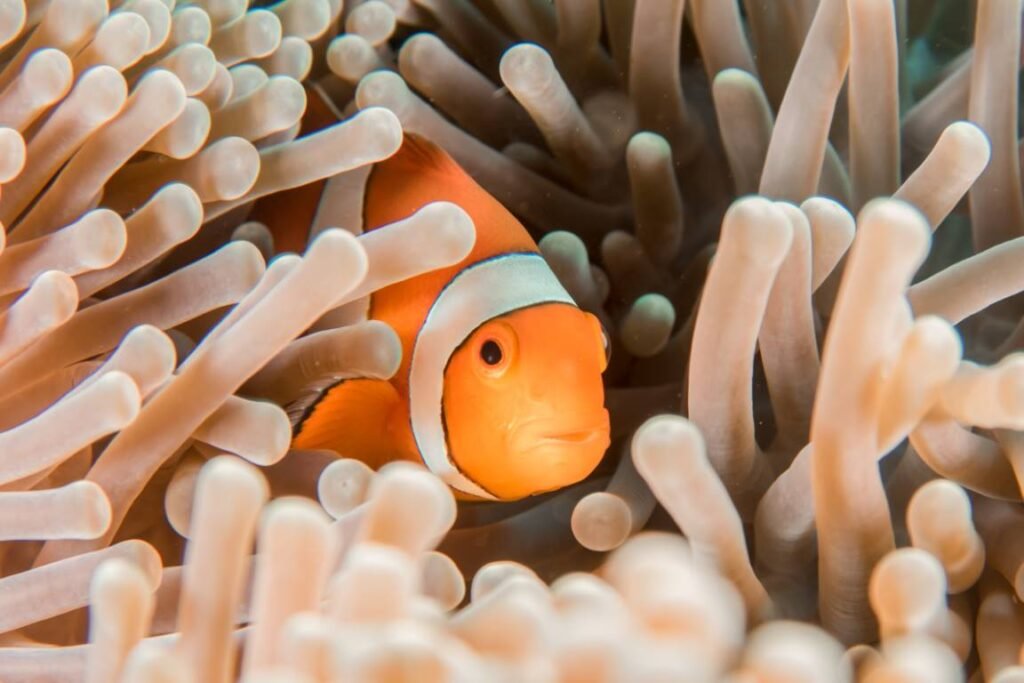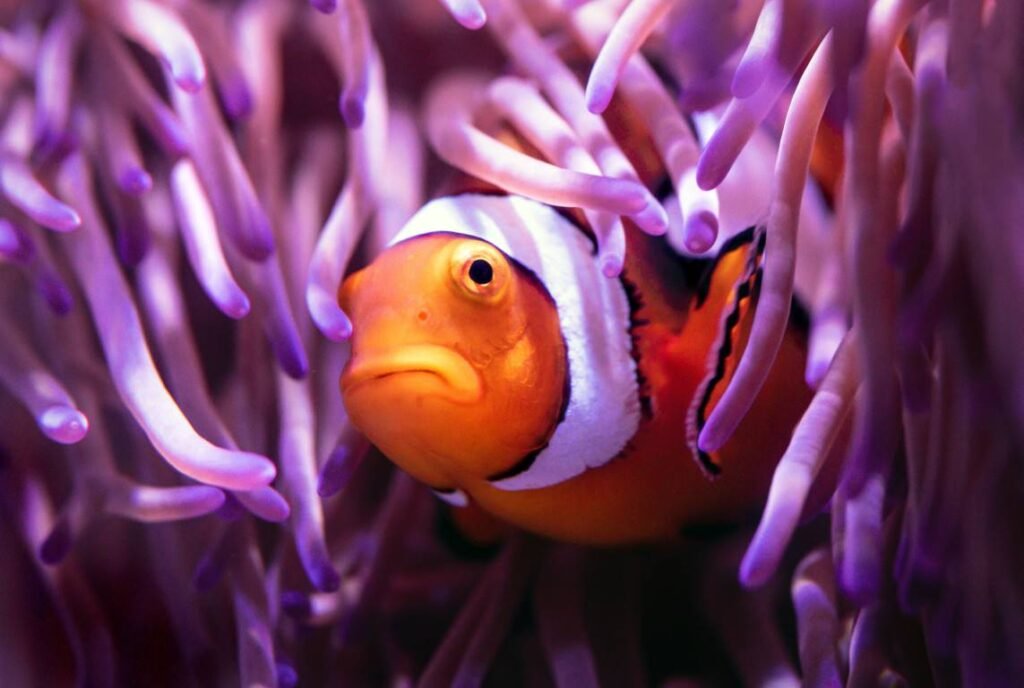Clownfish are a type of small, brightly colored fish that are commonly found in the coral reefs of the Indo-Pacific region. These fish are known for their unique relationship with sea anemones, which are stationary, predatory animals that are related to jellyfish. The clownfish and the anemone have a symbiotic relationship that is mutually beneficial, and this relationship has been the subject of many studies in recent years.
The relationship between clownfish and anemones is based on mutualism, which means that both organisms benefit from the relationship. Clownfish provide food for the anemone by bringing it scraps of food that they collect from the surrounding water. In return, the anemone provides a safe place for the clownfish to live and lay their eggs. The anemone’s stinging tentacles also provide protection for the clownfish, as they deter predators such as larger fish.
Several studies have shown that clownfish prefer to live in anemones that are located in areas with high water flow. This is because the anemone’s tentacles are more likely to capture passing food particles in areas of high water flow, which provides more food for the clownfish. Additionally, high water flow helps to flush away the clownfish’s waste products, which helps to keep the anemone’s environment clean.
Overall, the relationship between clownfish and anemones is a fascinating example of mutualism in the marine environment. These two organisms have evolved to work together in a way that benefits them both, and this relationship has important implications for the health of coral reef ecosystems. By protecting clownfish and anemones, we can help to ensure the health and diversity of the marine environment for generations to come.
Another factor that influences the relationship between clownfish and anemones is the chemical composition of the mucus that covers the anemone’s tentacles. It has been shown that clownfish are attracted to anemones that have a particular type of mucus, which they can detect using their sense of smell. The mucus attracts the clownfish to the anemone, and once they are there, they begin to form a relationship with the anemone.

10 Facts about Clownfish
Sure, here are some interesting facts about clownfish:
- Clownfish are also known as anemonefish, due to their unique relationship with sea anemones.
- There are over 30 different species of clownfish, which come in a variety of colors and patterns.
- Clownfish are relatively small, usually growing to be no more than 4 inches in length.
- They are found in warm waters throughout the Indian and Pacific oceans, including the Great Barrier Reef in Australia.
- Clownfish have a special layer of mucus on their skin that protects them from the stinging tentacles of the anemone.
- They are omnivores, feeding on a variety of small organisms including algae, plankton, and small crustaceans.
- Clownfish are able to change sex, with the dominant individual in a group becoming female, and the next largest fish becoming male.
- They are social creatures that live in groups, with each group usually consisting of a dominant female and several smaller males.
- The eggs of clownfish are laid on a flat surface near the anemone, and are guarded by the male until they hatch.
- Clownfish are popular aquarium fish, but they are best kept in captivity by experienced aquarium owners due to their specific needs and relationship with anemones.

